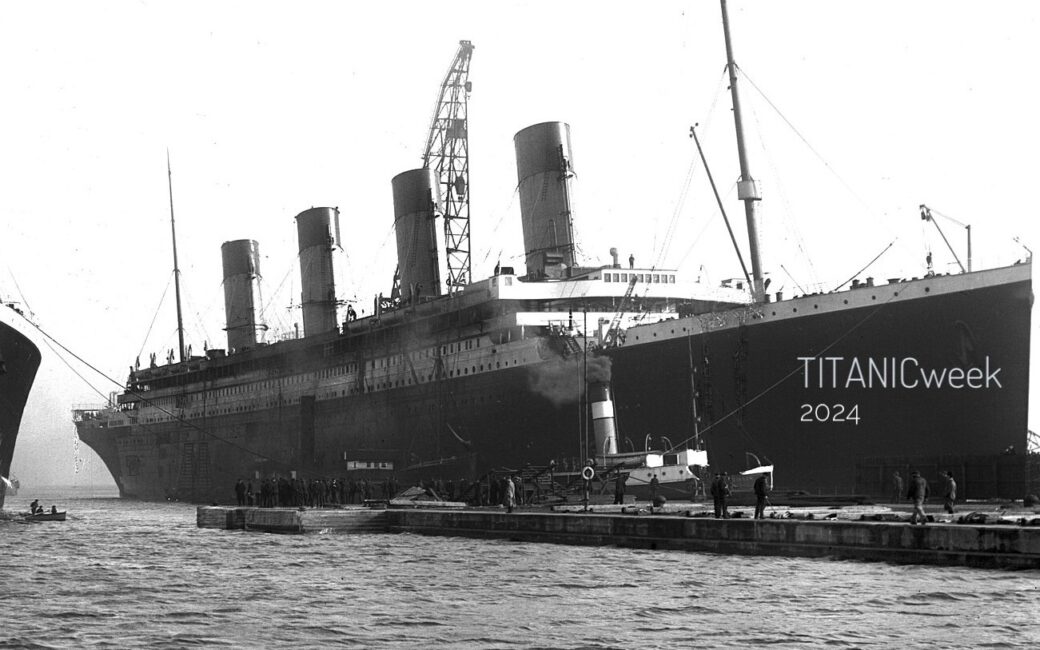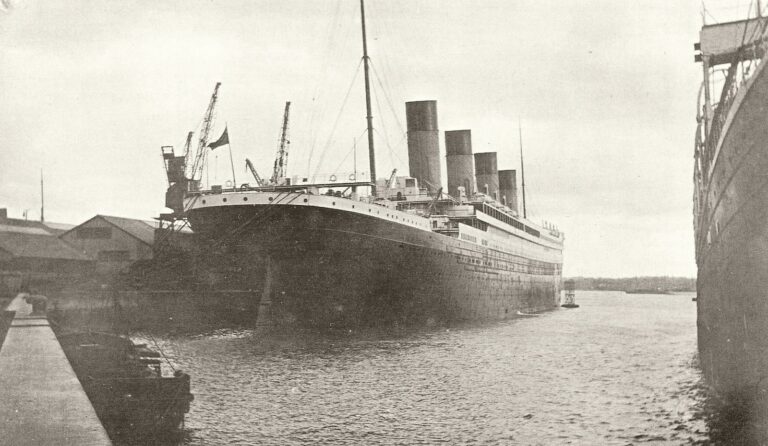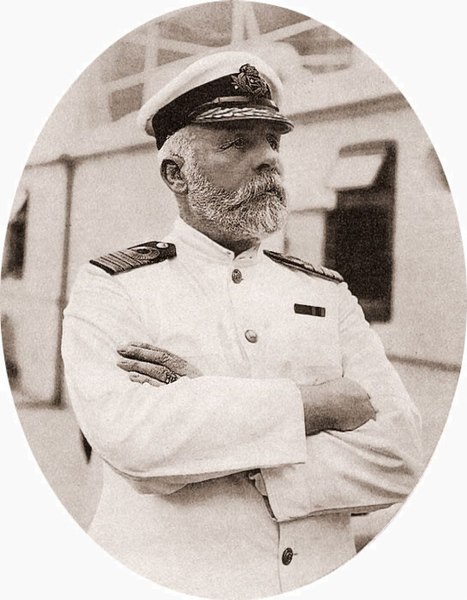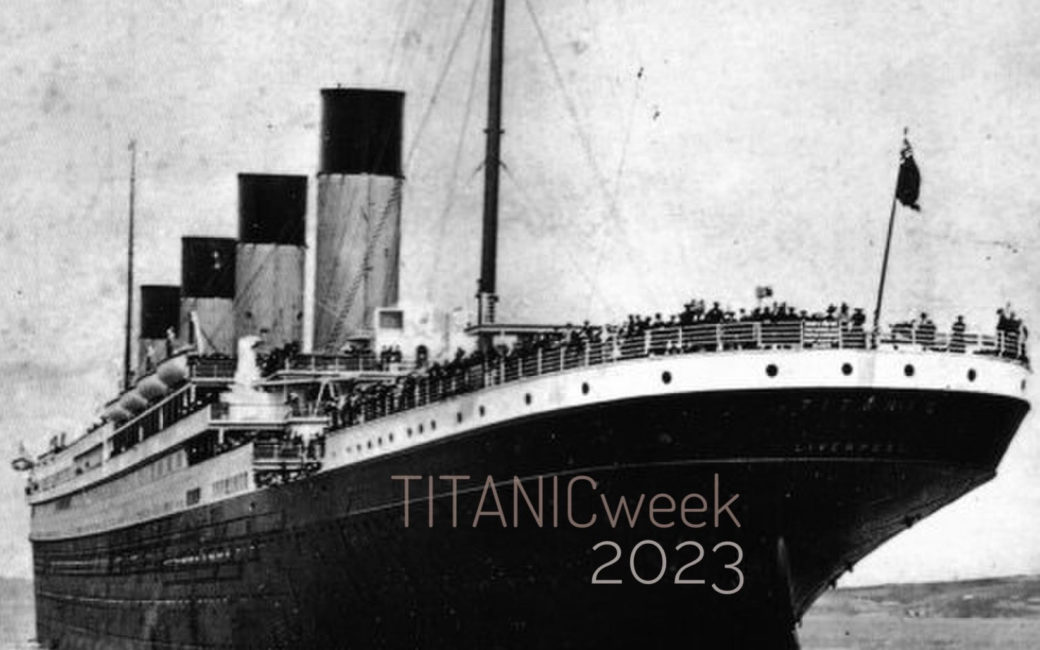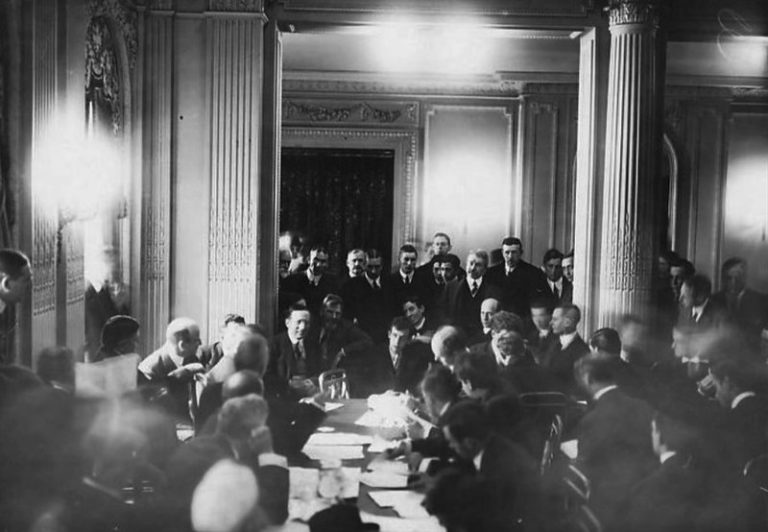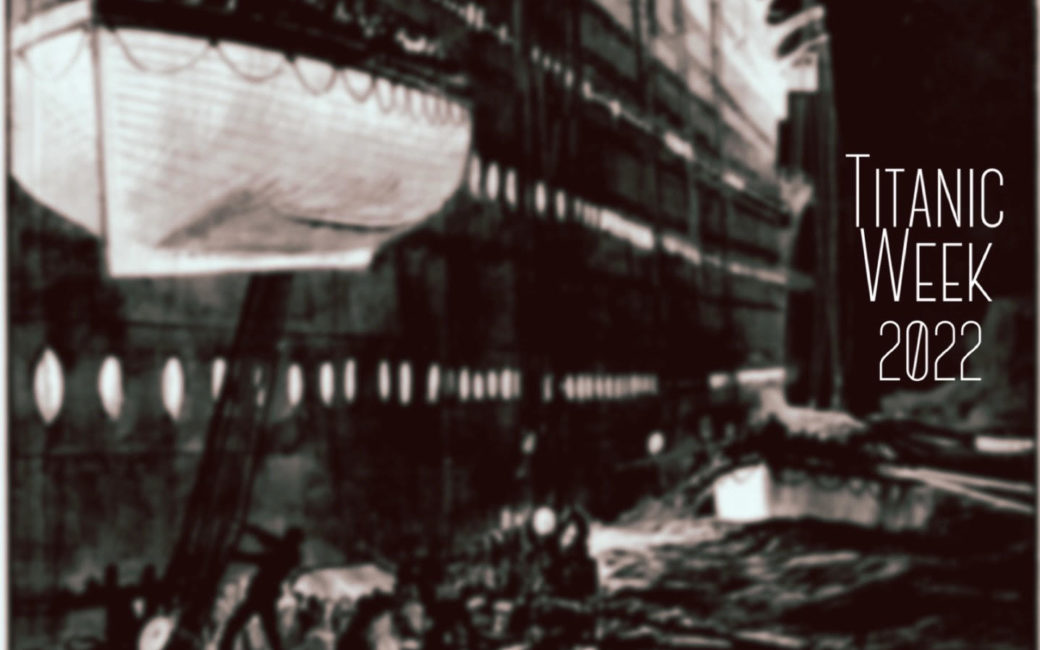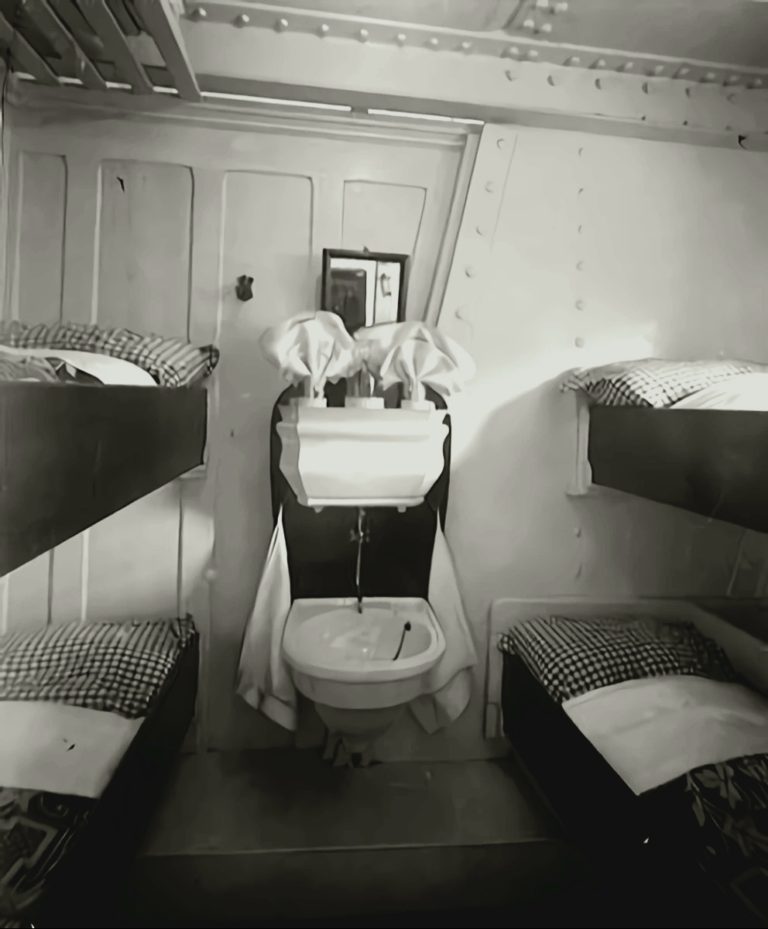"Steadfast in Peril": Titanic's Mail Room
Titanic’s “R.M.S.” designation meant “Royal Mail Steamer.”
The White Star Line, unremarkably, was under contract with the British government to efficiently and expediently transit mail.
And Titanic did in fact carry mail.
3,364 bags of it, to be precise.
These thousands of sacks, containing multiple millions of pieces of mail, arrived on board at all three port destinations reached.
Most mail bags embarked at Southampton and Cherbourg, with 1,758 at the former port and 1,412 at the latter. A comparatively small amount of 194 followed at Queenstown, before Titanic turned toward the open sea.
Receiving and sorting this mail by journey’s end was the sole responsibility of only five mail clerks.
Two of these men, James Williamson and John Richard Jago Smith, reported from the ranks of the Royal Mail.
Three American clerks—Oscar Woody, John March, and William Gwinn—joined them from their employ within the United States Postal Service.
Maritime postal clerks were esteemed, to say the least.
These men were elite, with most having been recruited from the Railway Mail Service and Foreign Mail Section after extended service. Such clerks have been noted to sort an average of 60,000 pieces of mail per day with minimal error.
And the five clerks on board Titanic were no exception to this rule of excellence.
Titanic’s postal quarters were split between two deck levels: the Post Office on G Deck, and the Sorting Mail Room on Orlop situated directly beneath it. They were located forward on the starboard side, within the fourth watertight compartment.
Titanic's mail facilities were by all accounts more polished--and far more generous--than any that the postal clerks had previously experienced.
On most vessels, the mail sorting room was distant from the hold that stored the still-bagged mail, and it was typically constricted and dingy.
Titanic, on the other hand, provided such spacious accommodation. And it boasted an infinitely efficient design: the two rooms were “stacked” one over the other, with a wide companionway connecting them for easy access.
The expansive post office had racks and cubbies for envelopes. Additionally, there was a broad sorting table and even a latticework gate that allowed the clerks to separate registered mail from the rest.
The sleeping quarters originally assigned to Titanic's postal clerks were situated among steerage cabins.
The Postal Museum in London possesses letters from the ship’s inspection on April 9th, the day before her maiden voyage. Therein, the writer(s) take umbrage with conditions of the clerks’ accommodations among Third-Class passengers--and in derogatory terms.
"The [sleeping] Cabins are situated among a block of Third Class cabins, and it is stated the occupants of these latter, who are mostly low class Continentals, keep up noisy conversation sometimes throughout the silent hours and even indulge at times in singing and instrumental music…if their [id est, the mail clerks] work during the day is to be performed efficiently it is essential that they should enjoy a decent sleep at night."
Consequently, the mail clerks were swiftly given alternate, more peaceful accommodations.
They were also reassigned a private dining room on an upper deck--a saloon they shared with the two Marconi operators.
From the moment the Titanic set sail, the five postal clerks would have been at work sorting through the literal thousands of bags of mail in the hold: categorizing all parcels and post according to their intended destinations.
Additionally, the First- and Second-Class Reading and Writing Rooms had postal boxes stationed outside their doors for passenger use.
The clerks, therefore, may have been alternately tasked with retrieving any such mail—and certainly worked to sort all of that, too.
The goal was to have all mail successfully dispatched at the so-called “quarantine station” in New York Bay, where all incoming ships had to tarry for health inspections.
Therefore, the mail would have disembarked even before the ship’s passengers.
At the time of the iceberg strike, the five men were in their private dining area celebrating the imminent birthday of American postal clerk Oscar Woody.
He would be turning 41 years old the next day, on April 15th.
Upon feeling the collision, the five mail clerks immediately made their way to the post office on G Deck.
Mail on board a ship was considered seriously precious cargo, and the clerks were duty- and honor-bound to safeguard it at all costs.
And so the men set to bundling and transferring all the mail they could manage into sacks and closing them up for transport to the upper decks.

Fourth Officer Joseph Boxhall.
PUBLIC DOMAIN
Fourth Officer Joseph Boxhall was sent down to the mail room by Captain Smith.
At the American Senate Inquiry, Boxhall retold his story of meeting the postal clerks.
Looking down into the open companion way that connected the post office where they stood to the mail hold directly below them, Boxhall stated he saw full-up mail bags floating by.
[Senator Fletcher] 3682. Did you do so?
- I was proceeding down, but I met the carpenter.
3683. What did you say to him?
- I said, "The captain wants you to sound the ship." He said, "The ship is making water," and he went on the bridge to the captain, and I thought I would go down forward again and investigate; and then I met a mail clerk, a man named Smith, and he asked where the captain was. I said, "He is on the bridge." He said, "The mail hold is full" or "filling rapidly." I said, "Well, you go and report it to the captain and I will go down and see," and I proceeded right down into the mail room.
3684. What did you find there?
- I went down as far as the sorting room deck and found mail clerks down there working.
3685. Doing what?
- Taking letters out of the racks, they seemed to me to be doing.
3686. Taking letters out of the racks and putting them into pouches?
- I could not see what they were putting them in.
3687. You could not see what disposition they were making of them?
- I looked through an open door and saw these men working at the racks, and directly beneath me was the mail hold, and the water seemed to be then within 2 feet of the deck we were standing on.
3688. What did you do in that situation?
- (continuing): And bags of mail floating about. I went right on the bridge again and reported to the captain what I had seen.
In a contemporary report, Officer Boxhall reportedly recounted his time in the mail room with further detail.
According to Boxhall, the clerks continued their work even as the post office began to flood not five minutes later.
They began hauling the heavy sacks--at least 100 lbs each, one under each arm--moving waist-deep through the frigid seawater.
Over and over again.
"When he got down to E deck, where the mailroom was located, he says he found it awash. Gwinn was there in his nightclothes, having rushed down from his room two decks above. Three other clerks were also there and all were bundling registered mail in sacks. It is estimated that its value was $800,000.
Boxhall says that the four men loaded themselves with heavy sacks of mail and stumbled on decks. at that time the boats were being launched."
Eventually, the struggling mail clerks appealed to the stewards for aid, and bedroom steward Alfred Theissinger obliged.
Alfred later recalled the following.
"I urged them to leave their work. They shook their heads and continued at their work. It might have been an inrush of water later that cut off their escape, or it may have been the explosion. I saw them no more."
All in all, Titanic’s postal clerks salvaged approximately 200 bags of mail from the post office on G Deck—but in the end, none were saved.
Tragically, nor were they.
All five men—Woody, Smith, Williamson, March, and Gwinn—died that night.
Two of their bodies were retrieved from the sea by the MacKay-Bennett: John March, and Oscar Woody.
The United States Postmaster General stated the following in a recommendation to the Postal Committee of the House of Representatives.
"The bravery exhibited by these men," [Postmaster General] Hitchcock said, "in their efforts to safeguard under such trying conditions the valuable mail intrusted [sic] to them should be a source of pride to the entire Postal Service, and deserves some marked expression of appreciation from the Government."
In Britain, a memorial was dedicated in Southampton: it reads “Steadfast in Peril.”
In 1999, a documentary revealed that the mailroom was accessible via the front cargo hatch.
Inside the post office on G Deck, the underwater robot--called Robin--found the mail sorting table, overturned and slowly rotting. Nearby, the latticework fence that segregated registered mail from the rest was open.
Then Robin descended further into the mail room on Orlop deck.
There, the submersible encountered canvas bags, grown over with sea life, and still full of mail.
SOURCE MATERIAL
https://www.postalmuseum.org/blog/post-office-aboard-titanic/
https://apwu.org/news/titanic-postal-clerks
https://www.titanicinquiry.org/USInq2/AmInq03Boxhall04.php
https://www.encyclopedia-titanica.org/just-told-sea-took-husband.html
https://www.encyclopedia-titanica.org/gave-lives-for-mails.html
https://www.encyclopedia-titanica.org/mail-clerk-gwinn-died-at-his-post.html
https://www.atlasobscura.com/places/titanic-postal-workers-memorial-southampton-england
